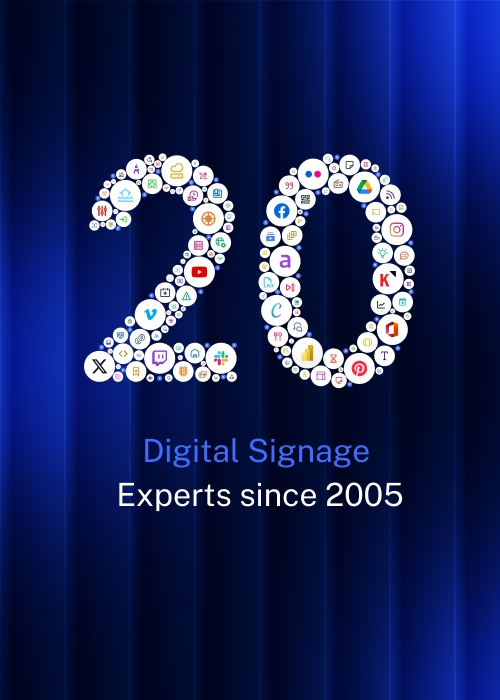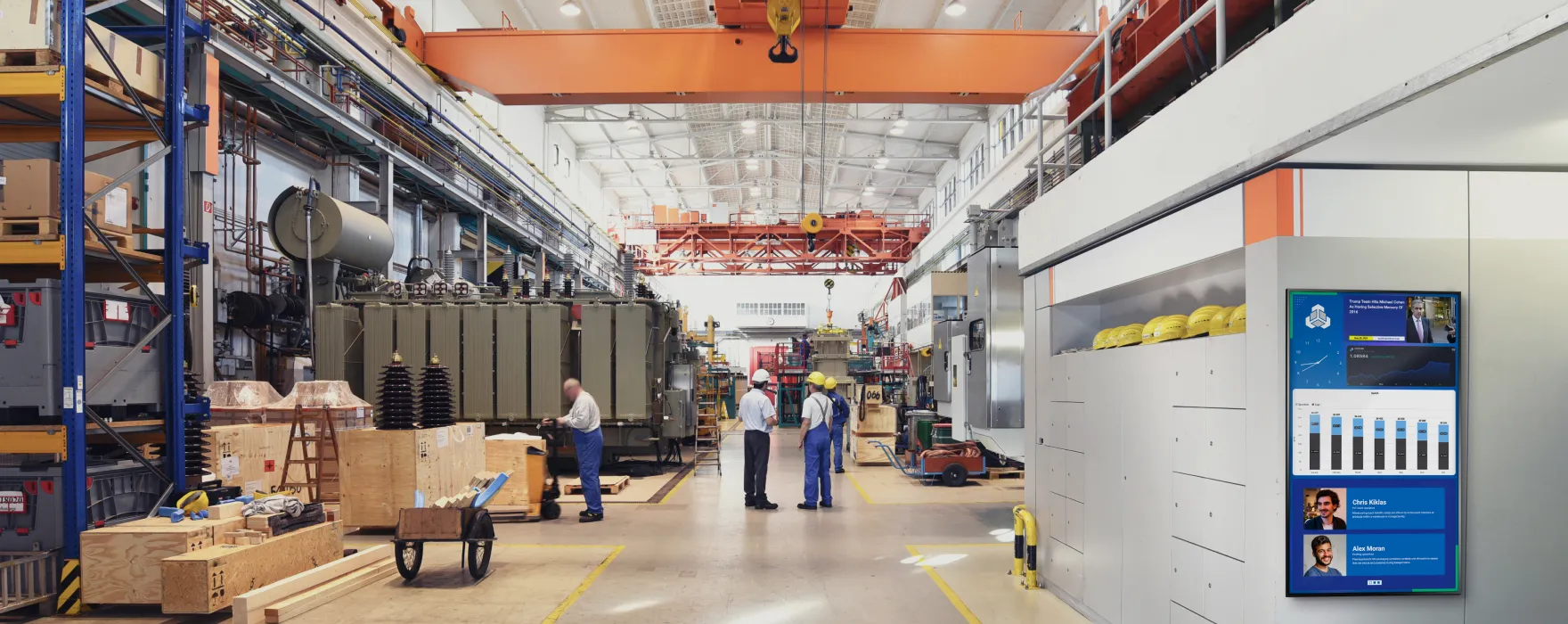How to Buy Digital Signage: A Complete Guide
Digital signage has evolved from a flashy novelty into a core business communication tool—powering menus in restaurants, dashboards in warehouses, wayfinding in hospitals, and announcements in corporate lobbies. Yet for newcomers, the buying process can feel overwhelming: dozens of screen types, endless software choices, confusing pricing, and technical jargon.
This guide breaks it all down—step by step. Whether you’re a business owner, marketing manager, or IT lead, you’ll learn how to plan, purchase, and launch a reliable digital signage network that fits your goals, budget, and timeline. No fluff—just practical, vendor-neutral advice from real-world deployments.
1. Start With the Why: Define Your Use Case and Success Metrics
Before you browse screens or software, define your purpose. Digital signage is most successful when it’s tied to measurable goals.
Common use cases include:
- Customer engagement: in-store promotions, digital menu boards, retail wayfinding.
- Employee communication: KPIs, shift alerts, HR messages, safety dashboards.
- Facility information: directories, event boards, interactive kiosks, lobby welcome screens.
- Operational visibility: logistics tracking, flight information, emergency alerts.
Define success upfront:
- Who’s your audience? What do they need to see?
- What outcome are you targeting—sales lift, faster communication, reduced errors?
- How often will content change?
- How will you measure success (views, response rates, engagement, cost savings)?
Having this clarity drives every downstream decision—from hardware selection to content design.
2. Know the Core Components
Digital signage solutions have four main building blocks: displays, media players, software, and support.
Displays
Commercial vs. consumer: Choose commercial-grade displays for 16/7 or 24/7 use, higher brightness, longer warranties, and network control.
Brightness:
- Indoor: 350–500 nits
- Bright indoor: 700–1,500 nits
- Outdoor/sunlight: 2,500+ nits
Specialty formats: interactive touchscreens, video walls, ultra-wide panels, or weatherproof outdoor screens.
Media Players
- External players: Reliable, flexible, and easily replaceable (Windows, Linux, or Android).
- System-on-Chip (SoC): Integrated in the display; reduces cables but limits CMS options.
- Key specs: robust CPU/GPU, 4K video decoding, remote management, and offline playback.
Mounting, Power, and Networking
Plan mounting types (fixed, tilt, kiosk), ensure stable power circuits, and segment signage players on your network for security.
Content Management System (CMS)
Your CMS is the heart of the operation—where content is created, scheduled, and distributed.
Cloud CMS: fast setup, automatic updates, low IT overhead.
On-prem CMS: tighter control, but higher maintenance.
Prioritize ease of use, data integrations, scheduling flexibility, and enterprise-grade security.
3. Don’t Overlook Security and Compliance
Digital signage devices sit on your network—so treat them as IT assets.
- Enforce role-based access control and SSO/MFA for CMS logins.
- Segment players from corporate systems using VLANs.
- Schedule tested OS updates, not automatic ones.
- Choose vendors with SOC 2 or ISO 27001 certifications if compliance matters.
4. Content Strategy: Make Every Pixel Count
Great hardware won’t fix poor content. Keep it clear, timely, and relevant.
- Use short, high-contrast messages and simple animations.
- Keep dwell time to 8–12 seconds per slide.
- Automate data feeds (Power BI dashboards, POS data, event calendars).
- Design with accessibility in mind—legible fonts, captions, and appropriate viewing height.
Assign a content owner—someone responsible for regular updates and quality control.
5. Estimate the True Cost (TCO)
Digital signage is a system, not a one-time purchase.
Budget categories:
- Displays and mounts
- Media players
- CMS licensing (monthly or annual)
- Installation, network, and cabling
- Content design and templates
- Training and support
Ballpark estimates (per screen, all-in):
- Basic indoor display: $1,200–$2,500
- Retail/menu board: $2,000–$4,500
- Outdoor screen: $6,000–$12,000+
- Interactive kiosk: $4,000–$10,000
Factor in multi-year costs—licenses, replacements, and content refreshes.
6. How to Compare Vendors
When evaluating providers, go beyond price. Focus on usability, scalability, and support.
Essential criteria:
Use a weighted scorecard to make objective comparisons.
7. Plan for Implementation Success
Successful rollouts follow a clear timeline:
- Discovery: identify goals and technical needs.
- Procurement: source displays, players, and CMS licenses.
- Content prep: create templates and approve initial designs.
- Installation: cabling, mounting, configuration, and testing.
- Training: onboard content editors and IT administrators.
- Go-live & review: verify uptime, collect feedback, measure KPIs.
Always pilot at a few representative sites first, refine processes, and then scale.
8. Measuring ROI
Digital signage ROI comes from both revenue impact and operational efficiency.
- Sales uplift: track increases in promoted product sales.
- Cost savings: eliminate printing and distribution costs.
- Productivity gains: faster communication and reduced downtime.
- Engagement: track content interactions, QR scans, or survey responses.
Example formula:
Payback (months) = Upfront Cost / (Annual Benefit / 12)
9. Avoid Common Pitfalls
- Using consumer TVs for 24/7 operation.
- Deploying without a content plan or governance.
- Ignoring site readiness (power/network).
- Underestimating brightness or viewing angles.
- Skipping pilot testing.
Pro tip: document everything—from device names to content workflows—to simplify scaling.
10. Accessibility, Maintenance, and Support
- Follow ADA guidelines for mounting height and reach.
- Include captions and readable fonts.
- Choose vendors that offer proactive monitoring, clear SLAs, and training resources.
- Keep spare players and displays for quick swaps.
A “runbook” with escalation steps, user roles, and maintenance procedures keeps operations predictable.
11. Building a Vendor RFP
When you’re ready to gather quotes, use an RFP that covers:
- Project overview and use cases
- CMS requirements (cloud/on-prem, integrations, user roles)
- Hardware specs (display size, brightness, environment)
- Installation and training scope
- Support SLAs and warranty coverage
- Pricing structure and renewal terms
Ask for case studies and reference clients similar to your own operation.
12. Your First 90 Days Post-Launch
- Week 1: verify monitoring alerts and proof-of-play reports.
- Weeks 2–4: analyze engagement metrics and tweak content schedules.
- Months 2–3: automate at least one data feed, collect team feedback, and conduct a performance review against KPIs.
Establish a quarterly cadence for content refreshes and performance audits.
13. Quick Checklist
Before you sign anything, confirm you’ve:
- Defined goals and KPIs
- Conducted a site survey
- Verified power/network readiness
- Selected a CMS that fits your workflow
- Planned for training and governance
- Budgeted for licenses and future scaling
14. Final Thoughts: Why Digital Signage?
Buying digital signage isn’t just a technology decision—it’s a communication strategy investment. The best deployments align hardware, software, content, and support around clear goals. Start small, measure impact, and scale deliberately.
Remember: success isn’t just installing screens—it’s creating a network that informs, engages, and inspires action. As you plan to implement digital signage at your workplace, store, school, hospital or facility, it is important to understand the fundamental reasons why businesses invest in this fast-growing, strategic communication channel that connects people, spaces, and data in real time. Whether you’re improving customer experience, streamlining operations, or energizing employees, the “why” behind digital signage comes down to three fundamentals: visibility, velocity, and value.
Visibility: Capturing Attention in a Crowded World
The average person is exposed to thousands of messages every day — emails, alerts, posters, social media. Static print signs fade into the background. Digital signage cuts through the noise by combining motion, light, and dynamic content to command attention exactly where decisions happen.
In retail, digital displays boost engagement and impulse buys by up to 30% compared to static posters. In offices and campuses, they drive awareness of company updates, events, and safety reminders. And in public venues like airports or hospitals, they provide clear, real-time navigation and reduce perceived wait times.
With proper content design — short messages, brand colors, data feeds — digital signage becomes a living part of your environment, not just a screen on the wall.
Velocity: Communicate and Adapt Instantly
Business moves fast. Policies change, promotions rotate, schedules update, and crises emerge. Traditional signage can’t keep up — but digital signage can.
With a centralized content management system (CMS), updates are instantaneous across locations. A marketing team can push new campaigns to hundreds of stores in minutes. HR can post emergency alerts or weather warnings organization-wide with a single click. Manufacturing teams can broadcast live production data or downtime alerts to the shop floor without delay.
That speed of communication doesn’t just save time — it prevents misinformation, improves safety, and strengthens organizational agility. Digital signage turns communication into a real-time, data-driven process.
Value: Measurable ROI and Operational Efficiency
Digital signage delivers quantifiable results that extend beyond “brand visibility.”
Revenue gains: Dynamic content converts. Restaurants that switch from print to digital menu boards often see 10–15% increases in upsell items. Retailers use product videos and limited-time offers to lift average transaction values.
Cost savings: Replacing print cycles eliminates recurring costs for posters, shipping, and labor. A network of 20 screens can save thousands annually in print and logistics.
Efficiency: Centralized control cuts coordination time across departments. Facilities teams can automate screen schedules, IT teams monitor device health remotely, and marketing can test and refine messages based on proof-of-play analytics.
In short, digital signage pays for itself — not just through sales impact, but through faster communication and fewer operational bottlenecks.
Experience: Building Trust and Connection
Beyond metrics, digital signage strengthens how people experience your brand. It humanizes information, adds transparency, and reinforces culture.
For customers, it signals professionalism and modernity. For employees, it creates alignment — showcasing wins, KPIs, and company values in ways email never could. In environments like hospitals, municipalities, and universities, it becomes an information service, improving wayfinding, safety, and satisfaction.
When designed with purpose, digital signage isn’t a cost center — it’s a brand and engagement engine.
Future-Proofing Communication
Digital signage is also an investment in flexibility. With integrations for data feeds, IoT sensors, room-booking systems, and BI dashboards, it adapts to new communication needs without replacing hardware.
As workplaces, campuses, and retail environments become more connected, the ability to broadcast, automate, and personalize content at scale will be essential. Businesses that implement signage now are building the infrastructure for tomorrow’s hybrid, data-driven communication.
Ready to Take the Next Step?
Download our free Digital Signage Buyer’s Checklist to plan your project with confidence—covering use-case templates, vendor questions, and budget calculators.
Or, explore how turnkey enterprise-grade platforms like Mvix Digital Signage simplify everything—from hardware procurement to content strategy—so you can focus on outcomes, not upkeep.







